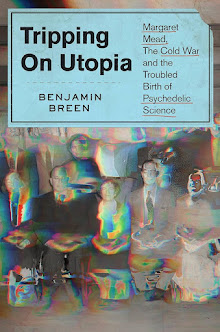In Portuguese,
barroco means "imperfect pearl": a fitting name for the
Baroque era, a period that combined ornate beauty with a distinct taste for the odd, macabre and irregular. This interplay between the beautiful and the monstrous -- and its connections to the rise of the
"New Science" in the second half of the seventeenth century -- is vividly exemplified by the Jesuit Father Gaspar Schott's
Physica Curiosa (1662), a compendium of abnormal births, strange animals and fabulous humanoid creatures thought to inhabit the far reaches of the world.
 |
| The work's Latin title page. |
The German-born
Schott (1608-1666) was a Jesuit with a keen interest in a number of disciplines, from hydraulic mechanics to medicine and optics. One can surmise that Schott acquired his wide-ranging interests from his mentor, the celebrated Jesuit genius
Anathasius Kircher (a polymathic marvel, Kirchner was a founder of Egyptology, used an early microscope to study microbes, lowered himself into an active volcano to learn about the earth's crust, constructed automatons, invented a magnetic clock and authored an immense encyclopedia on China). Below are a selection of images from Schott's
Physica Curiosa, all of which I selected from the
digital collections of the John Martin Rare Books Room at the University of Iowa. I've cropped some of the engraved plates to show interesting details and added my attempt at translations of the Latin captions and occasional explanatory notes. As the work's extended title dryly notes, Schott seeks to document "Angels, Demons, Men, Spirits, the Devil-Possessed, Monsters, Portents, Animals, Meteors, and other rare, arcane and curious things... and to illustrate them by many examples."
 |
| Schott, 579. "Seven-headed monster." |
 |
| Schott, 393. "Shaggy man who walks with hands on the ground." |
 |
| Schott, 393. "Woman of the woods in Java." This creature was probably based on the reports of seventeenth century Dutch mariners in Indonesia, who, in turn, may have been drawing upon indigenous knowledge of the orangutan -- "Man of the Forest" in the Malay language. |
 |
| Schott, 395. "Hair-covered girl of eight years." Clearly a girl born with hypertrichosis. |
 |
| "Boy with the head of an elephant." His companion is "a horned infant with spread eyes." I have no idea what to make of this one. |
The images in this section of the work appear to be a strange combination of depictions of actual birth defects or hereditary abnormalities and pictures of mythical man-beasts that were said by medieval travelers to inhabit the
Antipodes. In a later section, the book turns to the interesting and fantastical creatures that were being 'discovered' by European overseas voyages at the time. Many of these illustrations were evidently drawn from a book I wrote about in
my post on Edward Topsell's Historie of Foure-Footed Beasts -- others were more fantastical:
 |
| Schott, 616. Here we find a "winged bird-centaur with the head of a human" and "a three-headed monster with the heads of a fox, a dragon and an eagle." |
 |
| And here are the more familiar raccoon and river otter. Note, however, that the raccoon (here identified by its Spanish name, "mapache,") is from the New World and thus would have been as unfamiliar to European audiences of the time as many fantastical beasts. |
 |
| Cat piano from Schott's Magia Naturalis (Natural Magic). |
Finally, an interesting aside: Schott was also the first to describe what may well be the most bizarre musical instrument in history. This was the so-called the
Katzenklavier or 'cat piano.' See
this blog post on the subject to learn more about this strange creation, apparently real, which was said by Kircher to have been invented to relieve the melancholy of an Italian prince. PETA would have been appalled. For those interested in learning more, I haven't been able to find much written on Schott. However, his teacher Athanasius Kircher has generated a large body of fascinating scholarship -- see Paula Findlen's edited volume
Athanasius Kircher: the Last Man Who Knew Everything
(2004) for a good introduction
. (2004) for a good introduction.
(2004) for a good introduction.















1 comment:
Not to nitpick, but the Latin text accompanying the horned figure (and elephant headed boy) says "open mouth," not "open eyes."
Post a Comment